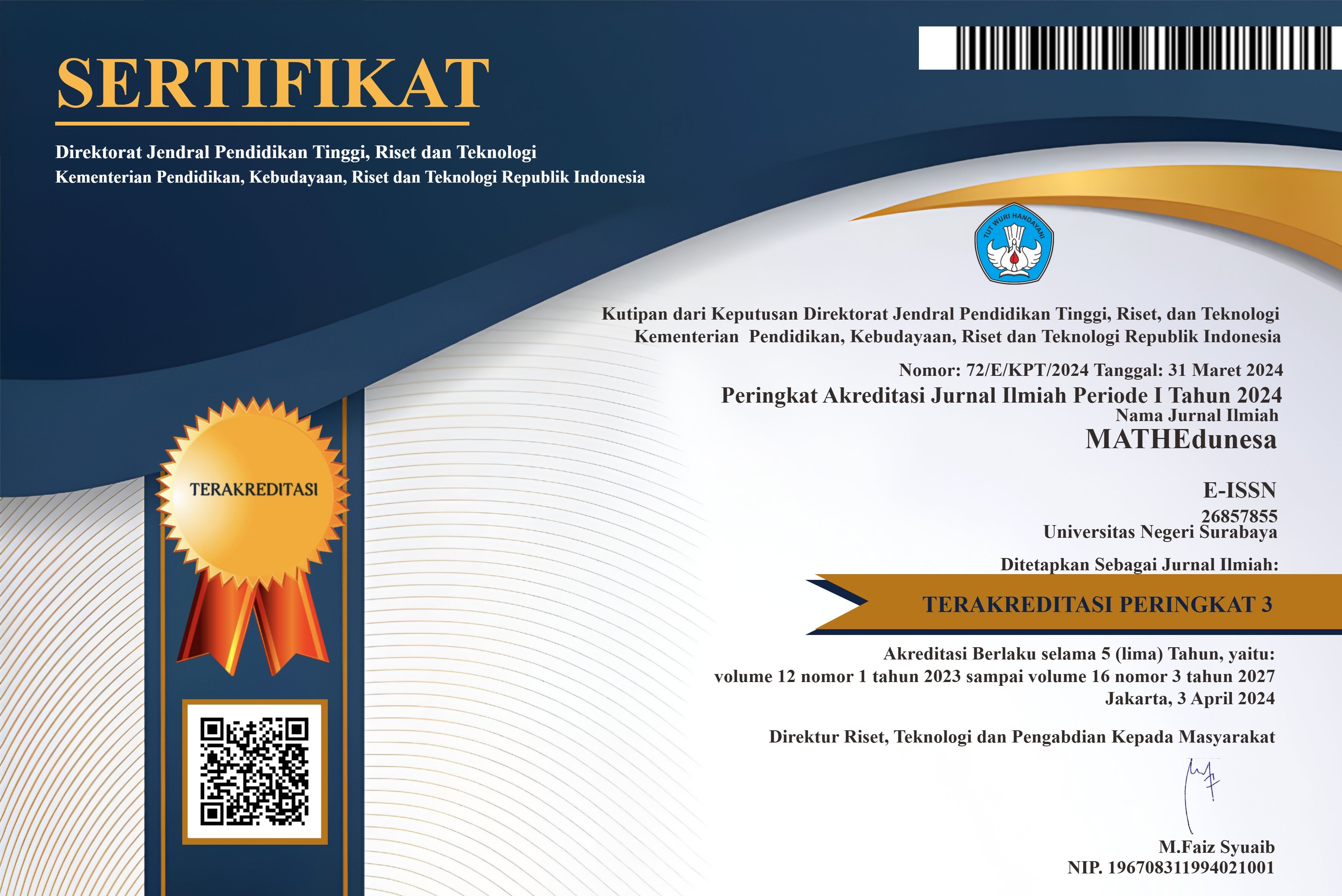Diagnostik Kesulitan Belajar Mahasiswa Fakultas Tarbiyah IAIN Kediri pada Mata Kuliah Statistika Pendidikan Melalui Four-Tier Diagnostic Test
DOI:
https://doi.org/10.26740/mathedunesa.v14n1.p59-72Abstract
This study aims to describe the types of learning difficulties, describe the differences in the types of learning difficulties of Faculty of Tarbiyah students in the religion group, science group, and language group, and describe efforts to overcome student learning difficulties in statistics courses. The data collection techniques used were tests, interviews, and documentation. The selection of subjects in this study was carried out by means of purposive sampling technique. Subjects were selected based on students who had taken educational statistics courses. Then 6 subjects were selected who made the most mistakes. Additionally, this study explores efforts to overcome these learning difficulties. The data collection techniques used include tests, interviews, and documentation, with subject selection carried out using a purposive sampling technique, focusing on students who had taken educational statistics courses. Six subjects were selected based on the highest number of errors. The results of the study show that misconceptions were most prevalent in the religion group, while partial understanding occurred most frequently in the religion group on specific questions. On the other hand, the language group experienced the highest occurrence of conceptual misunderstanding. The science group experienced the least severe learning difficulties compared to the other two groups, with the primary difficulty being partial understanding, caused by a lack of precision in choosing the reasoning, forgetting formulas, and calculation errors. The religion and language groups faced more misconceptions, caused by the inability to interpret formula notation, distinguish formulas, simplify root forms, as well as carelessness in entering data and rounding numbers. Efforts to address student learning difficulties include regular practice, forming discussion groups, encouraging active student participation, using software like Microsoft tools, and patient, thorough explanations from lecturers. These strategies are expected to reduce students' difficulties in understanding and learning statistical concepts.
Downloads
Downloads
Published
Issue
Section
 Abstract views: 102
,
Abstract views: 102
, PDF Downloads: 121
PDF Downloads: 121




